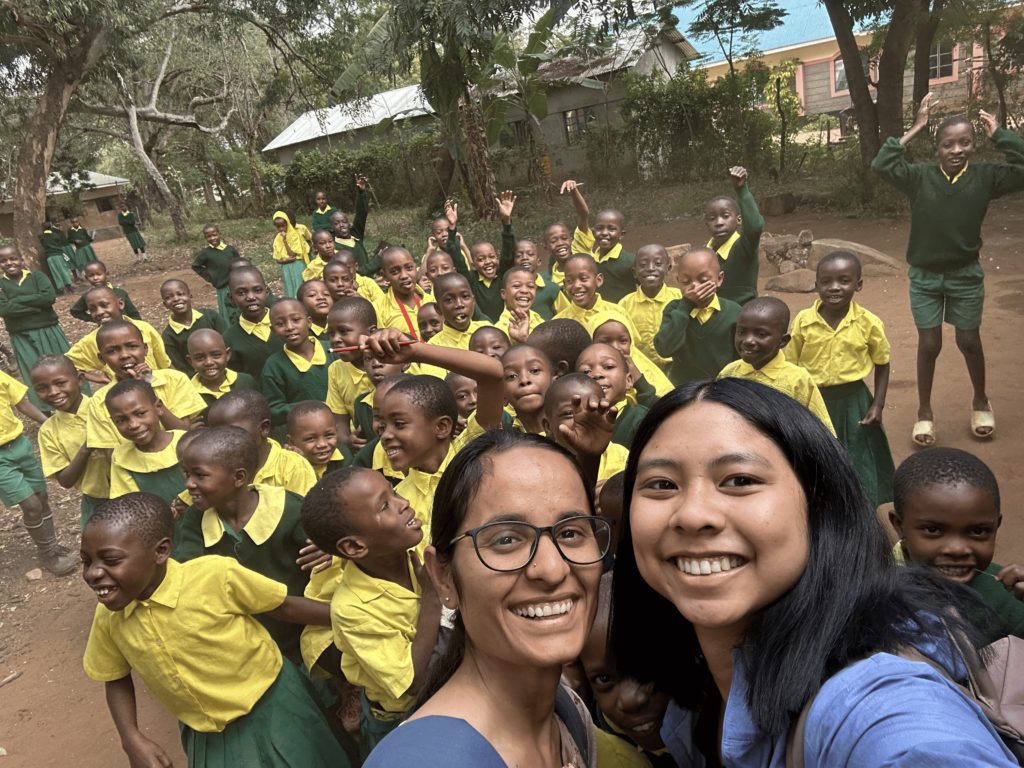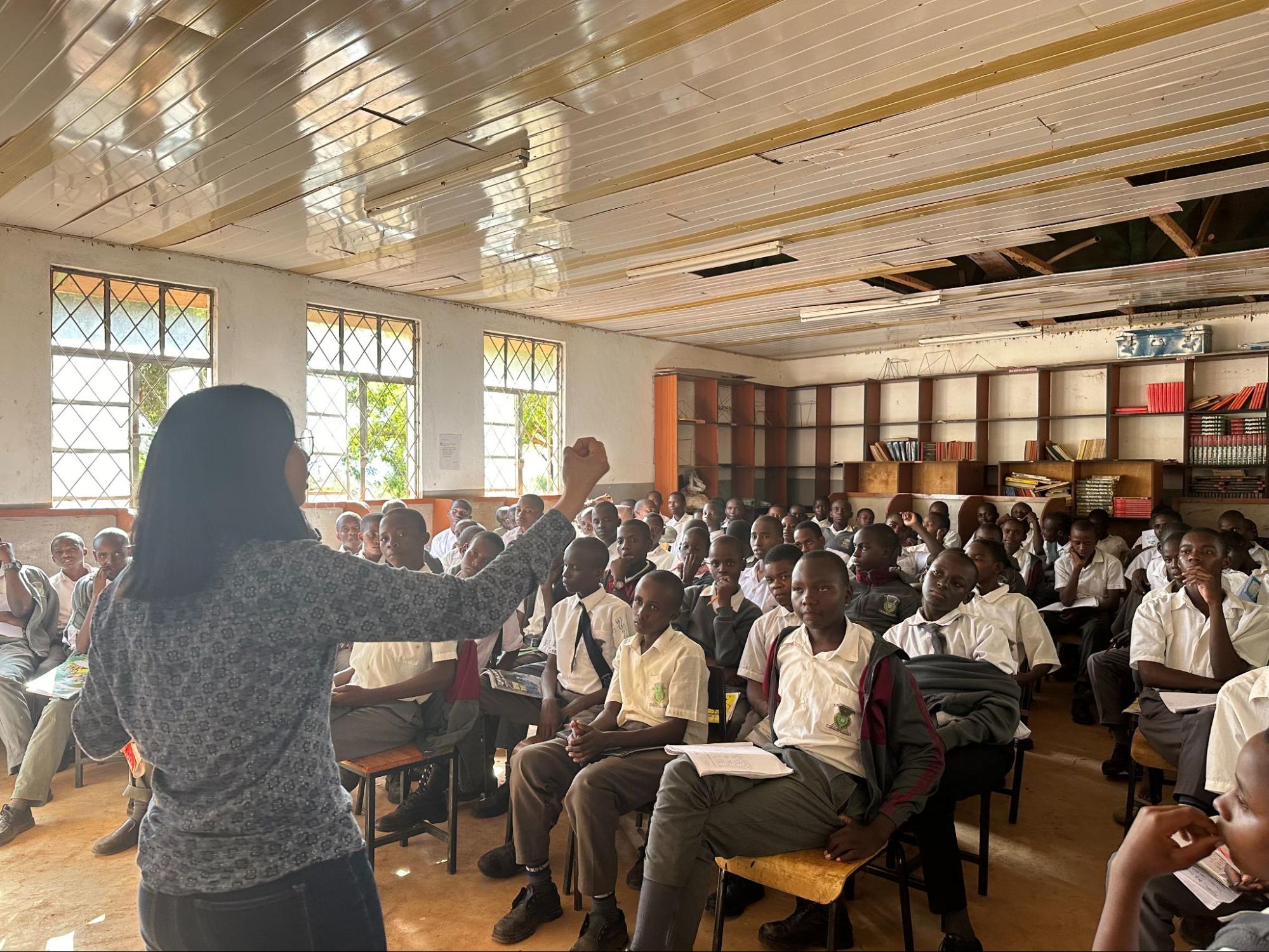
An occasional series with Blum Center affiliated faculty
By Tamara Straus
On January 3, 2014, Edward Miguel, the Oxfam Professor of Environmental and Resource Economics and faculty director of the Center for Effective Global Action at U.C. Berkeley, published an article in Science advocating for increased transparency in social science research. The article built on years of inquiry in which Miguel has focused on African economic development, rigorous evaluation methods to test humanitarian interventions, and the interactions between health, education, environment, and productivity for the poor.
In the Science article, Miguel and his co-authors summarized how researchers can improve the quality, credibility, and impact of their work. They also wrote: “Commentators point to a dysfunctional reward structure in which statistically significant, novel, and theoretically tidy results are published more easily than null, replication, or perplexing results. Social science journals do not mandate adherence to reporting standards or study registration, and few require data sharing.”
Miguel is not following this trend. Among the research projects he has pursued over the last decade, and with provision of all data, is the untidy link between climate change and human conflict. In an August 2013 Science article, Miguel and co-authors Solomon Hsiang, a climate economist in the Goldman School of Public Policy at UC Berkeley, and Marshall Burke, an environmental economist from Stanford, quantified the influence of higher temperatures on conflict, bringing together the results of 50 previous studies on the topic.
The reaction was divided. Some social scientists commended their analysis, which found “strong causal evidence linking climatic events to human conflict across a range of spatial and temporal scales and across all major regions of the world.” Others argued the link had considerable shortcomings—even though the authors made clear that rarely is climate change the only factor in increased rates of violence.
Criticism and debate have not stop the three scholars from continuing their analysis. In October 2014, the National Bureau of Economic Research (NBER) published their follow-up study “Climate and Conflict,” which added several more studies to the meta-analysis, confirmed previous findings, and detailed a few more, notably that “temperature has the largest average effect by far, with each 1σ [1 standard deviation] increase toward warmer temperatures increasing the frequency of interpersonal conflict by 2.4% and of intergroup conflict by 11.3%” and that “the 2-period cumulative effect of rainfall on intergroup conflict is also substantial (3.5%/σ).” To better understand the new study as well as how it is affecting social science research, the Blum Center asked Professor Miguel the following questions.
Q: What compelled you and your co-authors to undertake the analysis in the first place?
Edward Miguel: I had been working on this issue of extreme climate and violence since 2002/2003. I wrote papers on large-scale civil war and crime, and a few years after, when I was a visiting scholar at Stanford, I joined forces with Marshall Burke. Sol Hsiang was a grad student at Columbia at the time, working on related things. I think it was Marshall and Sol’s idea to aggregate the studies and say what is the common effect.
It took us about a year to complete the Science paper, with the three of us and a bunch of researchers. And then it was another few months of work for the NBER follow up. When there are a lot of data sets floating around, it takes a lot of effort to keep everything straight. You need to standardize everything, normalize everything. The NBER paper is more current—not just because it includes more studies, but because we break things down into current effects and lagged effects, temperature effects and precipitation effects. So we went deeper into what we were already doing.
Q: What were the biggest surprises?
Edward Miguel: I think it’s interesting that the evidence continues to accumulate from different parts of the world, with different types of violence, yet the patterns remain the same. That’s really the point of putting this together. There really is a striking pattern—and not just in the overall effect of extreme climate on violence, but in that temperature effects seem to be stronger than precipitation effects. Even in rich countries like the U.S., we found that when you have higher than normal temperatures, you have more violent crime.
We feel there’s a pretty strong relationship at this point linking climate and conflict, and there’s an increasing among data to support that link. There have been critiques—people saying, “You guys are lumping together lots of types of violence” [such as domestic violence, road rage, assault, murder, and rape for “interpersonal violence” and riots, ethnic violence, land invasions, gang violence, civil war and other forms of political instability, such as coups, for “intergroup conflict”]. We acknowledge that and we understand that. That’s why we make a distinction between crime and interpersonal violence on the one hand versus more large-scale violence on the other. I do think that it’s striking that whether you’re looking at land invasions in Brazil, or civil war in Africa, or Hindu-Muslim riots in India, you get these similar patterns. There is something deeper going on.
Q: Do you expect scholarship on the link between climate and conflict to grow—and, if so, in what discipline?
Edward Miguel: It’s always been an interdisciplinary effort. The first published paper I wrote on this in 2004 in Journal of Political Economy was with two political scientists. Even Sol and Marshall, my coauthors, in addition to their economics training, have a lot of climate science training—so there’s this intersection of different types social scientists in this area.
The scholarship is certainly increasing. And in the year and a half since the Science paper came out, that paper has been cited about 170 times. That’s because people are looking at it as a benchmark in the literature. To do a meta-study, we had to make a lot of the decisions about how to normalize data and standardize climate variables. Now, all these papers are coming out adopting our approach to normalization and standardization. We are having an effect on the development of the literature, because we’ve made it easier for the different studies across disciplines to speak to each other.
Q: What does the standardization involve?
Edward Miguel: It’s pretty simple. We’re looking at the local distribution of climate variation and then standardizing it. We look at the effect of what’s called the “one standard deviation change” in local climate. For example, Northern California’s climate is very different from the climate of the East Coast, which is very different from the climate of tropical Africa. Year-to-year, we actually have much greater temperature variation here in northern California than in West Africa. Yes, they have high temperatures, but year-to-year they don’t have that much variation in temperature. The more northern latitudes have greater temperature variation.
We take that into account and say, a shift of a few degrees Celsius up in Canada is not a big deal; they’re used to it or have adapted to it. But a shift of three degrees Celsius in West Africa—for the crops that they grow, for their economic activity—is a huge effect. So we allow a certain degree Celsius shift to have a big effect in the places where it is significant and a small effect where it isn’t. This is kind of sensible, but no one had said, “Hey, we can combine all this data by making this assumption.”
Q: What are the policy implications of the climate and conflict meta-study?
Edward Miguel: We certainly want policy makers to react. In the 2014 IPPC [Intergovernmental Panel on Climate Change] Report, two of the chapters cite the Science paper and the authors frame some of their results around it. So I feel our voice is being heard. In terms of what we want people do, we don’t really have a solution. No one really has the answer, because it’s been so hard to adapt to climate change. But what we want is for policymakers to begin the process of figuring out what the right adaptations are.
It’s striking that even the U.S. is not adapting to changing climate. We’re such a rich country, we’ve got great technology, but year to year, especially in a hot year, agricultural production does fall—and we’ve not been able to deal with it. So what are folks in the Sahel region, in West Africa, supposed to do? They don’t have our resources, our technology, and there’s been very little political will. There’s all this discussion of rich countries creating a massive fund to help poor countries adapt to climate change, but it’s mainly talk. So we don’t have the answer, but we hope the research encourages policymakers to seriously try to find a solution.




